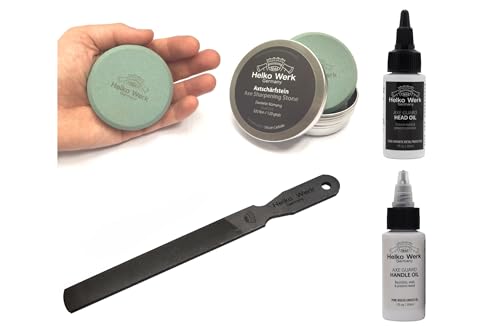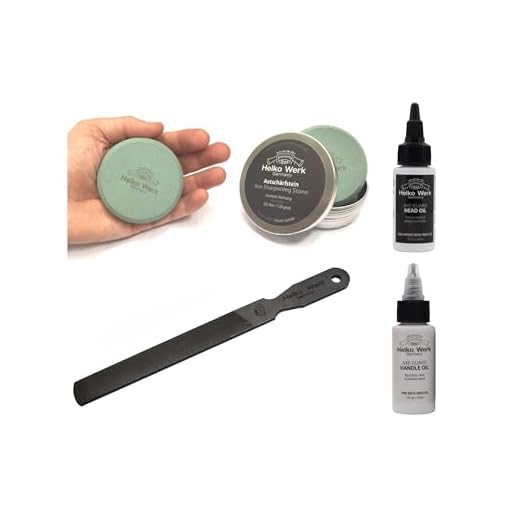


Throwing axes have been used for centuries as both tools and weapons. They are versatile and effective in various situations, from hunting to self-defense. If you’re interested in forging your own throwing axe, you’ve come to the right place. In this article, we will guide you through the process of creating your very own throwing axe from scratch.
Before you begin, it’s important to understand that forging a throwing axe requires some basic knowledge of blacksmithing and metalworking. If you’re new to this craft, we recommend starting with smaller projects to gain experience and develop your skills. Once you feel confident with the basics, you can move on to more complex projects like forging a throwing axe.
The first step in forging a throwing axe is to gather the necessary materials. You will need a suitable piece of steel, preferably a high-carbon steel that can withstand repeated impact. You will also need a forge, an anvil, a hammer, and various other tools such as tongs and files. Safety equipment, including gloves and goggles, is also essential to protect yourself during the forging process.
Once you have all the materials and equipment ready, it’s time to start forging your throwing axe. The process begins by heating the steel in the forge until it reaches a yellow-orange color. This is the optimal temperature for shaping the metal. Using the hammer and anvil, you will need to shape the steel into the desired shape of the axe head, paying careful attention to the weight distribution and balance. After shaping the head, it’s time to quench and temper the metal to achieve the desired hardness and durability.
Getting Started: Preparing to Forge a Throwing Axe
Before beginning the process of forging a throwing axe, it is important to gather all the necessary materials and tools. The following steps will help you get started on this exciting project:
1. Gather Materials
First, you will need to gather the necessary materials to forge a throwing axe. This includes:
- A steel bar or rod
- A hammer
- Tongs
- An anvil
- A grinder or file
- Safety equipment such as gloves and goggles
2. Prepare the Workspace
Before starting the forging process, it is important to set up a safe and suitable workspace. This includes:
- Ensuring there is enough space to move around and work with the materials
- Having a sturdy workbench or table to support the anvil and materials
- Clearing the area of any flammable or hazardous materials
- Providing proper ventilation to avoid inhaling any fumes or gases
It is also important to have a fireproof forge setup if you plan on heating the steel bar or rod during the forging process.
By gathering all the necessary materials and preparing your workspace properly, you will be ready to begin the exciting process of forging a throwing axe. Stay tuned for the next steps in this guide!
Gathering the Necessary Equipment
Before you can start forging a throwing axe, it’s important to gather all the necessary equipment. Here is a list of the items you will need:
1. An anvil: Find a sturdy anvil that can withstand the force of hammer strikes.
2. Hammer: Use a heavy hammer with a comfortable grip to shape and mold the metal.
3. Forge: Set up a forge where you can heat the metal to high temperatures for shaping.
4. Safety gear: Wear protective gloves, goggles, and an apron to protect yourself from sparks and hot metal.
5. Metal: Choose a high-quality steel or iron that is suitable for making a throwing axe.
6. Tongs: Use long-handled tongs to safely handle the hot metal during the forging process.
7. Quenching bucket: Prepare a bucket of water or oil for quenching the metal and cooling it down quickly.
8. Grinding tools: Have a grinder or file on hand to smooth and shape the edges of the axe head.
Make sure you have all these items before you begin forging your throwing axe. Having the right equipment is essential for a successful and safe forging process.
Selecting the Right Steel
In order to forge a durable and effective throwing axe, it is crucial to select the right steel. The steel used for the blade must be able to withstand the impact and stress of throwing, as well as provide a sharp cutting edge. Here are some key factors to consider when choosing the right steel for your throwing axe:
1. Hardness: The steel used should have a high level of hardness to ensure that the blade stays sharp and does not dull after repeated throwing. Look for steel with a Rockwell hardness rating of at least 50-55 HRC.
2. Toughness: While hardness is important, it is also important to balance it with toughness. The steel should be able to withstand the impact of hitting the target without chipping or breaking. Look for steel with a good balance of hardness and toughness, such as high carbon steel or tool steel.
3. Corrosion resistance: Since throwing axes are often used outdoors, it is important to choose a steel that has good corrosion resistance. This will help prevent the blade from rusting or corroding over time. Stainless steel or carbon steel with a protective coating can be good options for corrosion resistance.
4. Forgeability: Consider the forgeability of the steel, which refers to how easily it can be worked and shaped during the forging process. Some steels may be more difficult to work with, requiring specialized tools and techniques. Look for steel that is known for its forgeability to make the forging process easier and more efficient.
5. Cost: Finally, consider your budget when selecting the right steel for your throwing axe. Some high-end steels may be more expensive, but offer superior performance and durability. However, there are also affordable steel options available that can still provide satisfactory results.
By carefully considering these factors and selecting the right steel, you can ensure that your throwing axe is strong, durable, and effective in hitting its target.
Shaping and Tempering the Blade
Shaping the blade is a crucial step in the process of forging a throwing axe. The blade needs to have the right shape and size to ensure optimal performance.
Step 1: Forging the Blade
To shape the blade, start by heating the steel to a high temperature using a forge or a torch. Once the steel is hot enough, carefully hammer it into the desired shape using a flat-faced hammer. Pay close attention to the curvature and thickness of the blade to ensure proper balance and aerodynamics.
Step 2: Grinding and Polishing
After shaping the blade, use a grinding wheel to refine the edges and smooth out any rough spots. This step is important for achieving a sharp cutting edge and a sleek finish. Begin with a coarse grit wheel to remove excess material, then gradually switch to finer grit wheels for a smoother surface. Finish the process by polishing the blade using sandpaper or a polishing compound.
Step 3: Tempering the Blade
Tempering is a heat treatment process that improves the hardness and toughness of the blade. After shaping and grinding, the blade is heated to a specific temperature and then rapidly cooled. This process helps to relieve internal stresses and enhance the blade’s durability. Use a heat source, such as a forge or a kiln, to heat the blade to the recommended temperature. Submerge the heated blade in a quenching medium, such as oil or water, to rapidly cool it down. Finally, polish the blade again to remove any discoloration caused by the tempering process.
| Shaping and Tempering the Blade Summary: |
|---|
| – Heat the steel and hammer it into the desired shape to forge the blade. |
| – Use a grinding wheel to refine the edges and polish the blade. |
| – Temper the blade by heating it to a specific temperature and then rapidly cooling it. |
| – Polish the blade again to remove any discoloration caused by the tempering process. |
Finishing Touches: Adding a Handle and Balance
When it comes to forging a throwing axe, the finishing touches are just as important as the initial steps. Adding a handle and achieving the right balance can make a significant difference in the performance and accuracy of your throwing axe. Here are some key steps to consider:
- Selecting the right handle: Choosing the right handle material is crucial in ensuring a comfortable and secure grip. Opt for a durable wood, such as hickory or ash, that can withstand the impact of throwing.
- Measuring and cutting the handle: Measure the distance from the top of the axe head to the end of your throwing hand. This measurement will guide you in cutting the handle to the appropriate length.
- Shaping the handle: Once you’ve cut the handle to size, use a rasp or sandpaper to shape it according to your preference. Ensure that the handle tapers towards the end, providing a secure grip and reducing the chances of slipping.
- Attaching the handle: Apply a layer of epoxy adhesive to the eye of the axe head to ensure a strong bond with the handle. Insert the handle into the eye and secure it with screws or wooden wedges. Allow the adhesive to dry completely.
- Checking the balance: Achieving the right balance is crucial for accurate throwing. Hold the axe by the handle, approximately two-thirds down its length, and see if it balances horizontally. Adjust the handle or add weight if necessary to achieve a balanced throw.
By following these steps, you can add a handle and achieve the proper balance for your throwing axe. Remember to prioritize safety and take necessary precautions throughout the process. Now, you’re ready to test out your newly forged throwing axe and unleash your skills!







